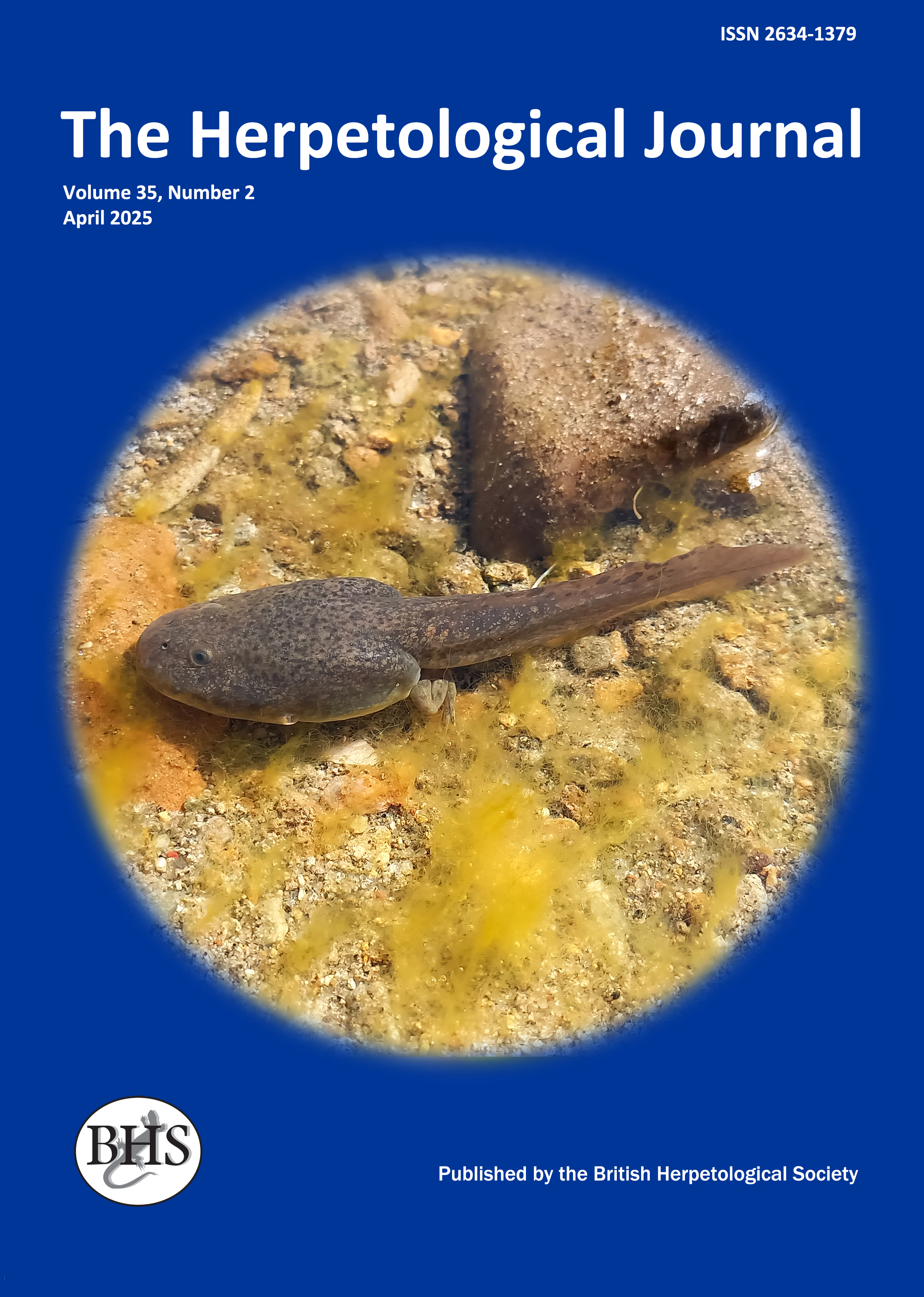
The Herpetological Journal
The Herpetological Journal is the Society's prestigious quarterly scientific journal. Articles are listed in Biological Abstracts, Current Awareness in Biological Sciences,Current Contents, Science Citation Index, and Zoological Record.
ISSN 0268-0130
2021 Impact Factor from Clarivate for the Herpetological Journal is 1.194, an increase of 0.332 from 2020.
pdf 05. Spatial structure and regulation of a population of the brown frog Rana macrocnemis in Georgia
1111 downloads
Open Access
pp.169-177
Authors: David N .Tarkhni Shvili And Ramaz Gokhelashvili
Abstract: A spatially structured population of the brown frog Rana macrocnemis was studied over seven consecutive years in the valley of a small mountain river. Frogs spawned in numerous temporary pools and puddles situated along the river bed. The overall number of reproductive females varied between 868 and 1146 during the course of study. The population had a 'sourcesink' spatial structure: 88% of all froglets metamorphosed in just a few of the sites. Density dependent mortality of larvae did not significantly affect the overall number of metamorphs. However, the variation in size of the whole population and of one of the two sub-populations was density-dependent. The most important cause of regulation appears to be density-dependent dispersal of juveniles from sources to adjacent sinks. Sinks often had a high number of ' traps' - large well-illuminated pools that frogs prefer for egg deposition but which desiccate during the course of larval development more often than the deep and cold, less attractive breeding sites.
Keywords: Rana macrocnemis, frog populations, spatial ecology

